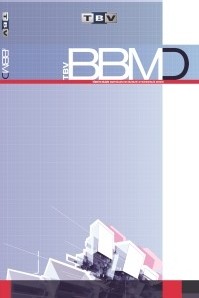İkili Yürütülebilir Uygulamalarda Arabellek Taşması Zayıflığına Neden Olan Şüpheli İkili İşlem Kod Dizilimlerinin Tespiti
Günlük hayatımızda kullandığımız birçok akıllı cihazı kişisel ve çevresel verilerimizle besliyor, daha işlevsel-yararlı hale gelmelerini sağlıyoruz. İçerdikleri yazılımlar ile “akıllı” davranan bu cihazlar çoğu zaman karar alma aşamasında bizleri yönlendirebiliyor. Günlük hayatımızda artan “yazılım kullanma” ihtiyacı aynı zamanda saldırı yüzeyini artırmakta ve bilinçli kullanıcılarda tedirginlik yaratabilmektedir. Bu durum yazılımların işlevselliği kadar güvenliğini de ön plana çıkarmaktadır. Kullandığımız yazılımın güvenlik zayıflığı içerdiğini öğrendiğimizde hızlıca ya tamamen kullanmaktan vazgeçiyor ya da güvenlik açığı giderilmiş sürümünün yayımlanmasını bekliyoruz. Yazılımlardaki güvenlik zayıflıklarının kullanım öncesi tespiti hem müşteri memnuniyetini artırmakta hem de geliştiricinin saygınlığını artırmaktadır. Bu çalışmada, ikili yürütülebilir yazılımlarda sıkça rastlanan arabellek taşması zayıflığına neden olan şüpheli ikili işlem kod dizilimlerinin tespitine yönelik geliştirilen yöntem ve deneysel sonuçlar paylaşılmıştır.
Anahtar Kelimeler:
Yazılım güvenliği, yazılım güvenliği zayıflığı, makine öğrenmesi, arabellek taşması
Detection of Suspicious OpCode Sequences Causing Buffer Overflow Vulnerabilities in Binary Executable Applications
We feed many smart devices that we use in our daily lives with our personal and environmental data and make them more functional and useful. These devices, which are smart with the software they contain, can often guide us in decision-making. The increasing “need to use software” in our daily lives also increases the attack surface and can create doubtfulness for privacy-conscious users. This makes the software security as important as the functionality. When we find out that the software we use contains security vulnerability we either quickly stop using it completely or we are waiting for the new release of the secure version. Detection of security weaknesses in software before use increases customer satisfaction and developer reputation. In this study, we present a new method and its success for detecting suspicious opcode sequences which cause buffer overflow vulnerabilities in binary executables.
___
- [1] International Organization for Standardization, "ISO/IEC TR 9126-4: Software engineering -- Product quality -- Part4: Quality in use metrics", http://www.iso.org, Son erişim tarihi: 29 Ekim 2019
- [2] International Organization for Standardization, "ISO/IEC 25010: Systems and software engineering -- Systems and software Quality Requirements and Evaluation (SQuaRE) -- System and software quality models", http://www.iso.org, Son erişim tarihi: 29 Ekim 2019
- [3] Durmuş, G. , Soğukpınar, İ ., “Makine öğrenmesi teknikleri ile ikili yürütülebilir dosyalarda arabellek taşması zayıflığı analizi için yeni bir yaklaşım”, Gazi Üniversitesi Mühendislik Mimarlık Fakültesi Dergisi , 34 (4), 1695-1704, 2019
- [4] McGraw, G., "Software Security", IEEE Security &Privacy, vol. 2, no. 2, 2004, pp. 80-83, 2004
- [5] Baca, D.,"Developing Secure Software in an Agile Process", Doctoral Dissertation in Computer Science, Blekinge Institute of Technology, 2012
- [6] Younan, Y. , “25 Years of Vulnerabilities: 1988-2012”, Research Report, Sourcefire Crop, 2013
- [7] Younan, Y., Joosen, W., Piessens F., “Code Injection in C and C++ : A Survey of Vulnerabilities and Countermeasures”, Report CW386, 2004
- [8] Akgün, F., Buluş, E., Buluş, H.N., “Yazılım Mühendisliği Açısından Uygulamalardaki Ara Bellek Taşması Zafiyetinin İncelenmesi", Elektrik-Elektronik-Bilgisayar Mühendisliği 11. Ulusal Kongresi ve Fuarı, İstanbul-TÜRKİYE", 2005
- [9] Alhazmi, O.H., Malaiya, Y.K., Ray I., "Measuring, Analyzing and Predicting Security Vulnerabilities in Software Systems", Computers & Security (2006), doi:10.1016/j.cose.2006.10.002, 2006
- [10] Ozment, A., Schechter, S.E., “Milk or Wine: Does Software Security Improve with Age?”, In the proceedings of The Fifteenth Usenix Security Symposium, July 31 - August 4 2006: Vancouver, BC, Canada, 2004
- [11] Chess, B., McGraw, G., "Static Analysis for Security", IEEE Security &, Privacy, vol. 2, no. 6, pp. 76-79., 2004
- [12] Halkidis, S.T., Tsantalis, N., Chatzigeorgiou, A., Stephanides, G., "Architectural Risk Analysis of Software Systems Based on Security Patterns", IEEE Transactions on Dependable and Secure Computing, vol. 5, no. 3, 2008
- [13] Utku A., Doğru İ.A., "Permission based detection system for android malware", Journal of the Faculty of Engineering and Architecture of Gazi University, 32 (4), 1015-1024, 2017
- [14] Jay-Evan J. Tevis, "Automatic Detection of Software Security Vulnerabilities in Executable Program Files", Doctoral Dissertation in Computer Science, Auburn University, 2005
- [15] Tevis, Jay-Evan J. et al., "Static Analysis of Anomalies and Security Vulnerabilities in Executable Files", ACM SE'06, Mar. 10-12, 2006
- [16] D.C. DuVarney, V.N. Venkatakrishnan and S. Bhatkar, "SELF: A Transparent Security Extension for ELF Binaries", Proc. New Security Paradigms Workshop, 2003
- [17] M. Cova, V. Felmetsger, G. Banks, and G. Vigna., “Static Detection of Vulnerabilities in x86 Executables", Annual Computer Security Applications Conference (ACSAC), Miami, FL, December, 2006
- [18] Balakrishnan, G.,“WYSINWYX: What You See Is Not What You eXecute”, PhD Thesis, Computer Science Department, University of Wisconsin at Madison, August 2007
- [19] Cha, S. K., Avgerinos, T., Rebert A., Brumley, D., "Unleashing MAYHEM on Binary Code", Proceedings of the 2012 IEEE Symposium on Security and Privacy, p.380-394, May 20-25, 2012
- [20] NIST Software Assurance Reference Dataset, https://samate.nist.gov/SRD/testsuite.php, Son erişim tarihi: 29 Ekim 2019
- [21] Weka 3 - Data Mining with Open Source Machine Learning Software in Java, https://www.cs.waikato.ac.nz/ml/weka, Son erişim tarihi: 29 Ekim 2019
- [22] Aydın F., Aslan Z., "Diagnosis of neuro degenerative diseases using machine learning methods and wavelet transform", Journal of the Faculty of Engineering and Architecture of Gazi University, 32 (3), 749-766, 2017
- [23] Durmus, G., “Source Code and Data Set of The Study”, http://github.com/gdurmus/, Son erişim tarihi: 29 Ekim 2019
- ISSN: 1305-8991
- Başlangıç: 2005
- Yayıncı: Türkiye Bilişim Vakfı
Sayıdaki Diğer Makaleler
Gursoy DURMUS, İbrahim SOGUKPİNAR
AES Algoritmasına Yapılan Zaman Odaklı Önbellek Saldırılarının Makine Öğrenmesi ile Tespiti
Konum Önerisi için Zaman Tabanlı Uzman Destekli İşbirliğine Dayalı Filtreleme
Başak Melis ÖCAL, H. Altay GÜVENİR
Erdal BAŞARAN, Zafer CÖMERT, Abdulkadir SENGUR, Ümit BUDAK, Yuksel CELIK, Mesut TOĞAÇAR
Büşranur KILIÇ, Elif BAYKAL KABLAN, Hülya DOĞAN, Murat EKİNCİ, Mustafa Emre ERCİN, Şafak ERSÖZ
